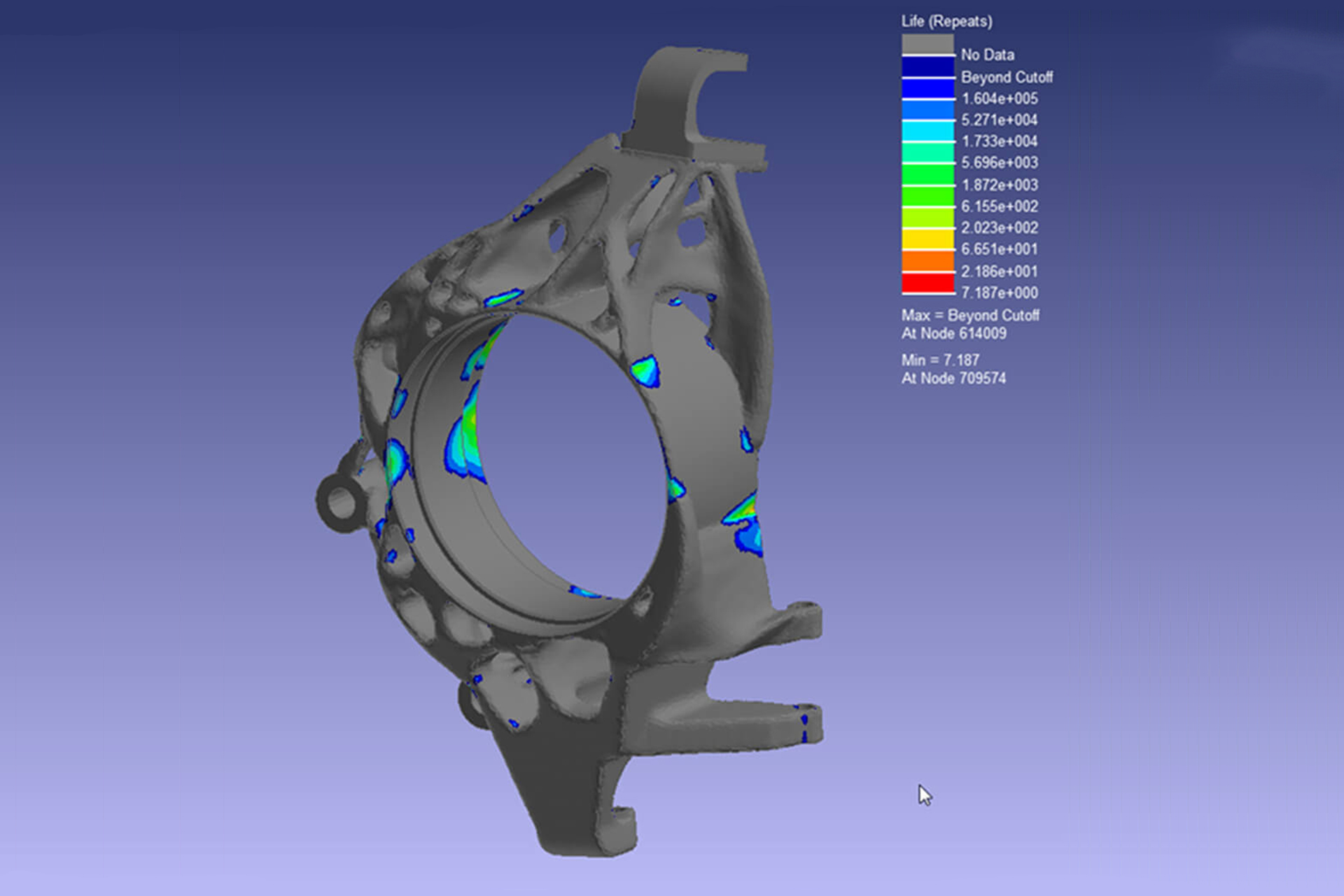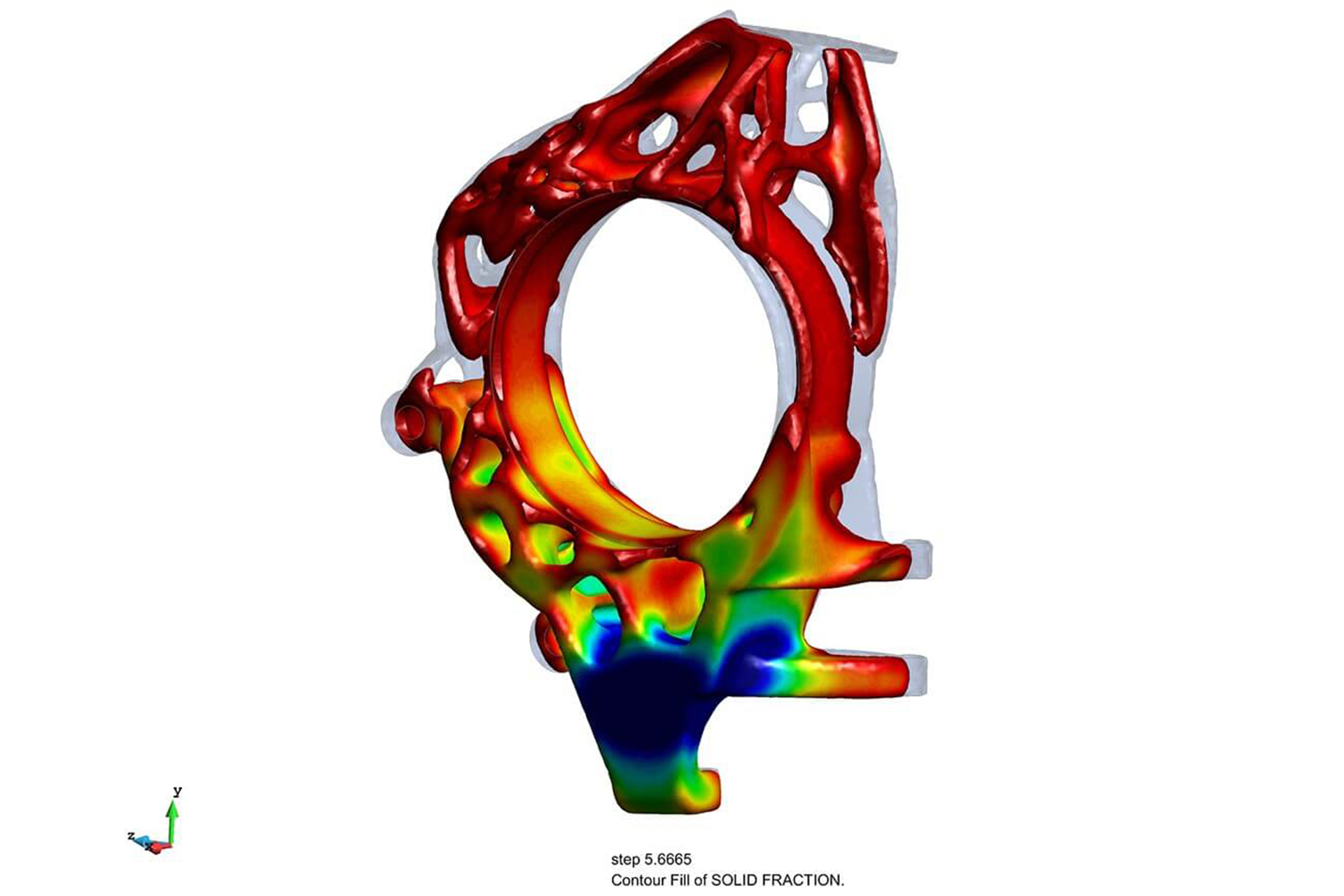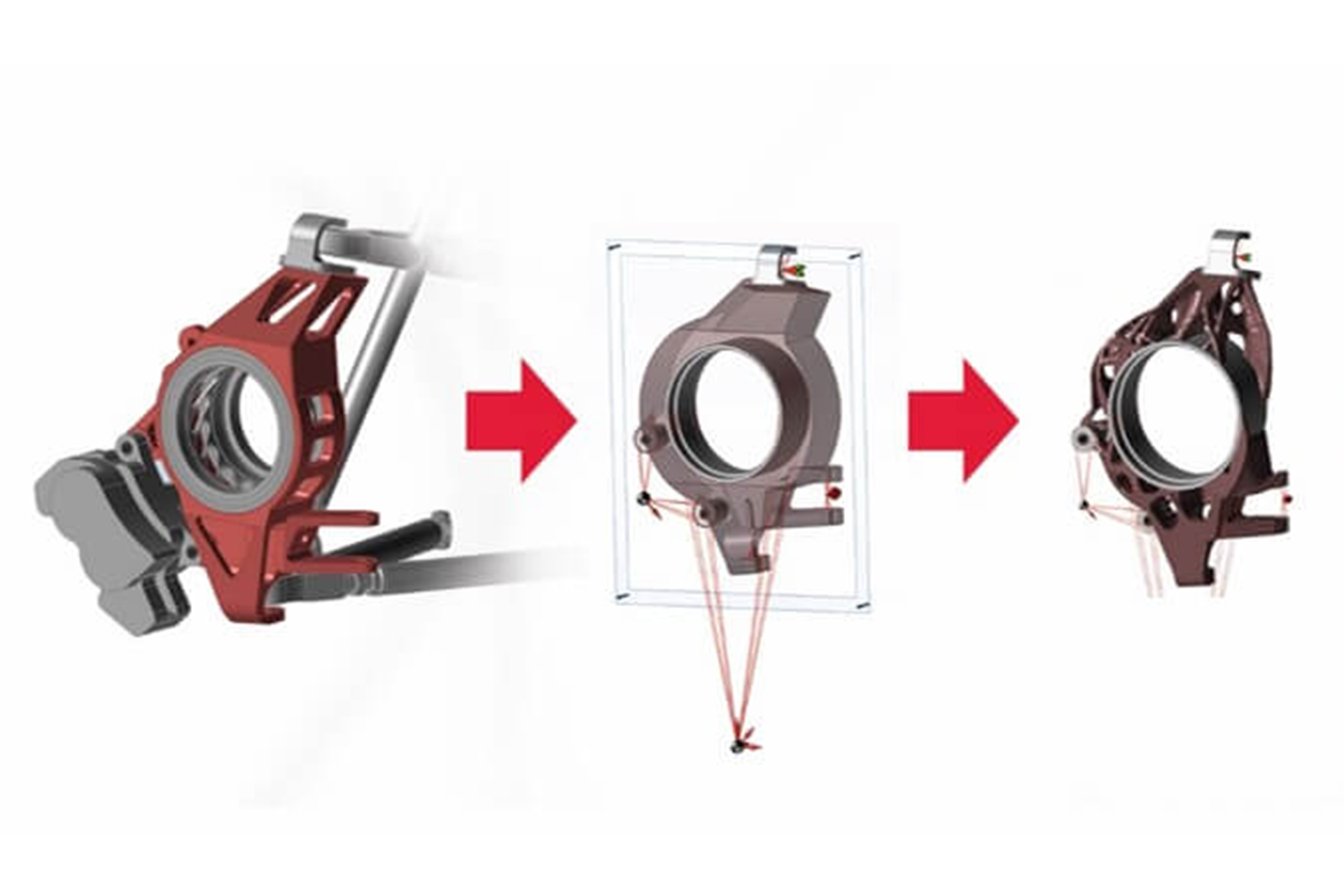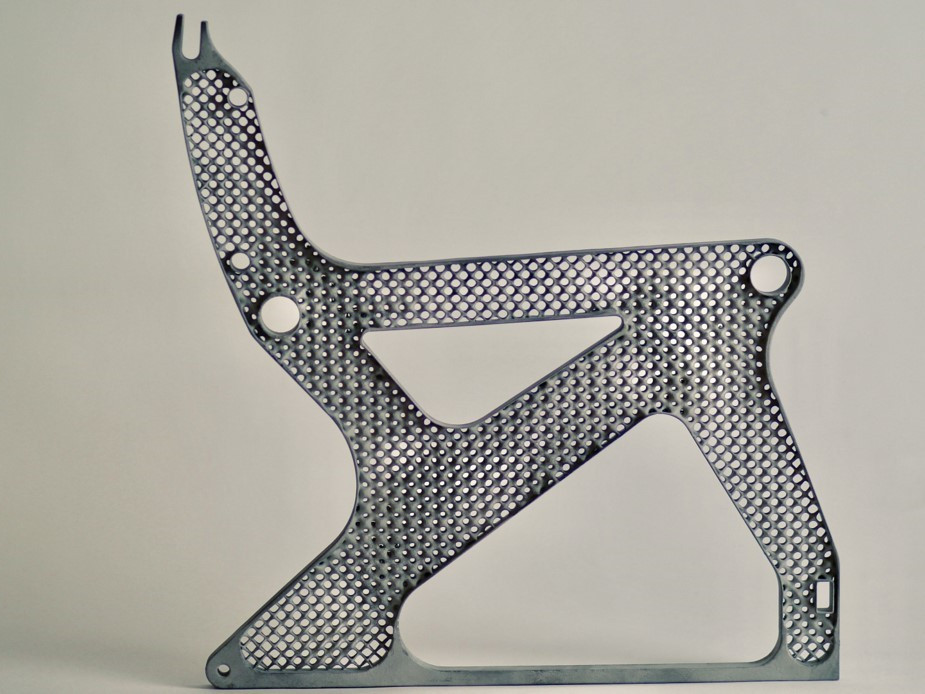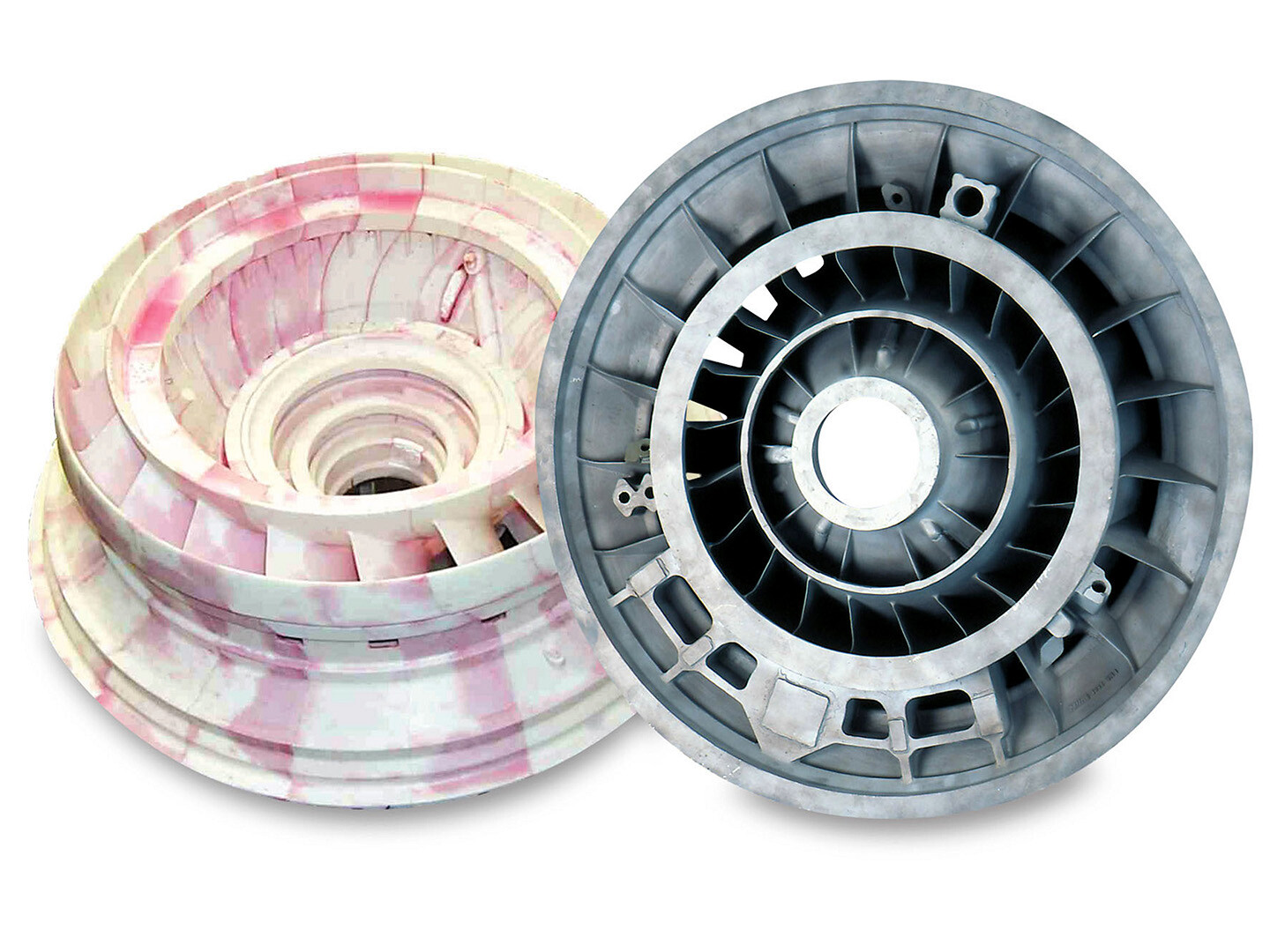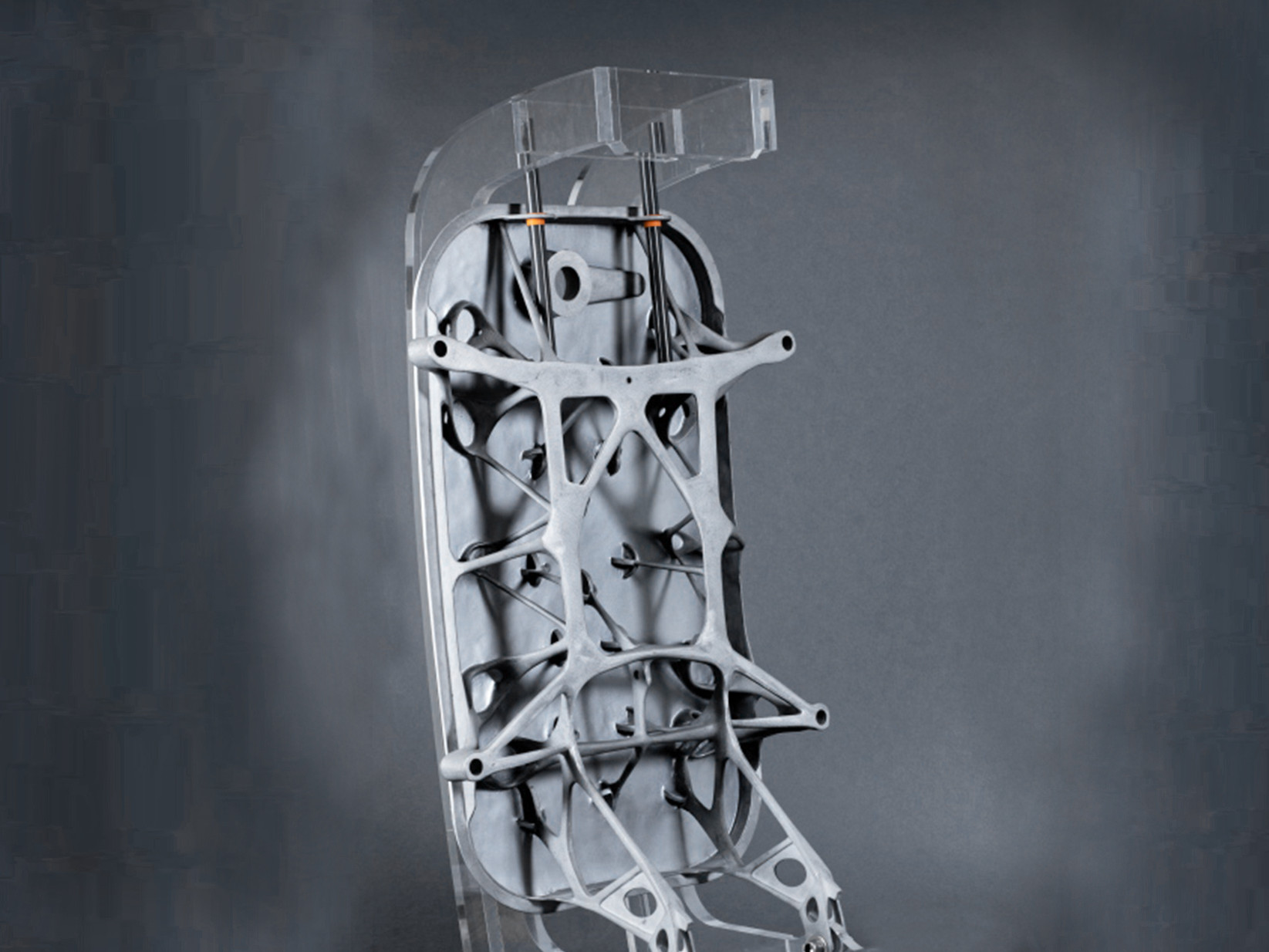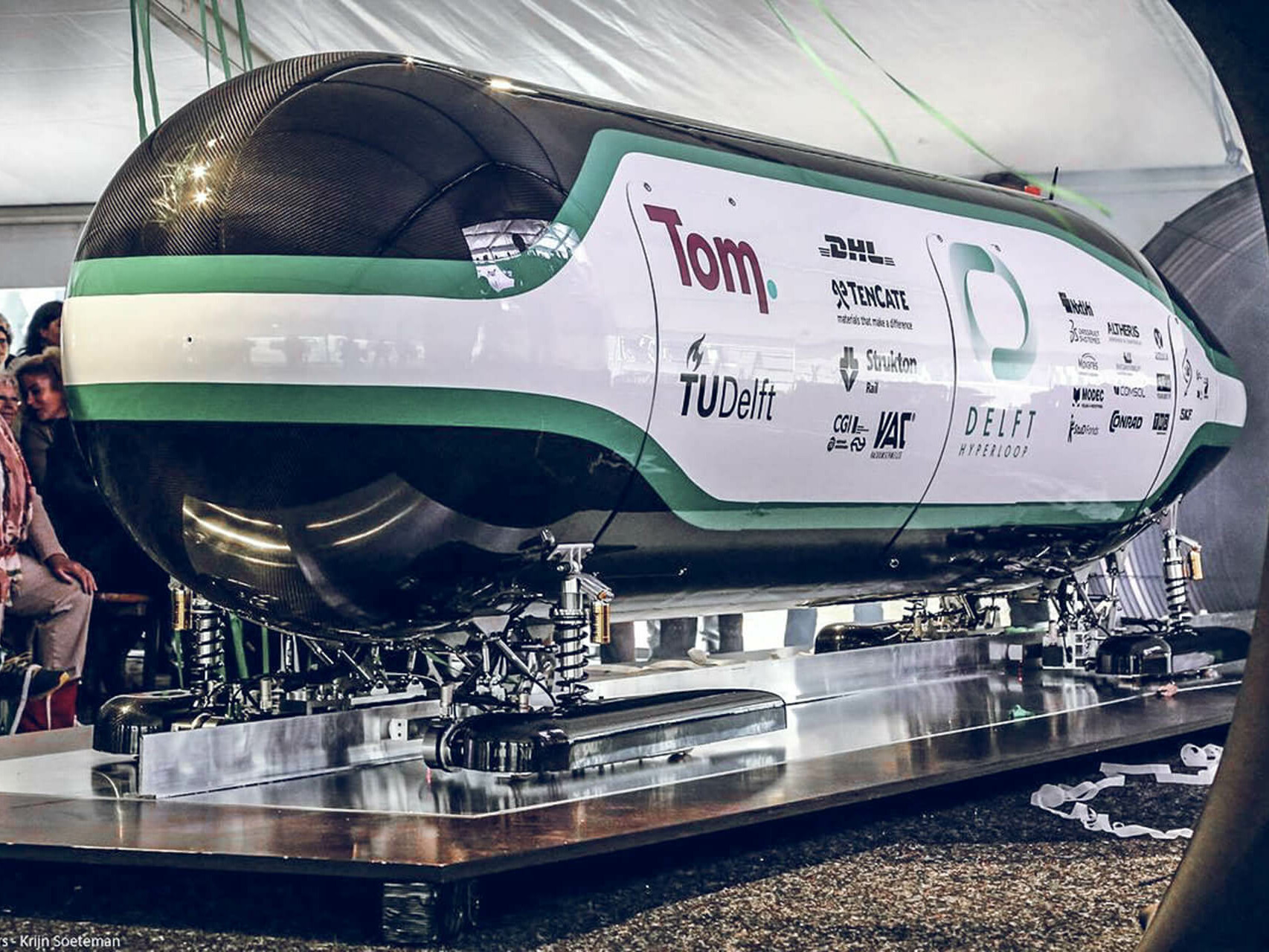- Home
- Case Studies
- Aerospace
- Increase component performance efficiently
How to increase performanceof components efficiently
How can you increase component performance many times over without adding to the weight? Combining simulation and 3D printing processes can significantly shorten the entire optimization process.
A simulation replaces laborious and costly material testing, and the prototype can be produced quickly and economically with the aid of innovative 3D printing Technology. A wheel trunk is subjected to deformation under load, and this could influence the tracking stability of the entire chassis.
The stiffness of this component is therefore especially important. The challenge was to optimize the design of the existing wheel trunk in order to greatly stiffen the wheel trunk without adding to the weight.
The individual steps involved in efficiently optimizing the wheel trunk through simulation and 3D printing are described below. The investment casting molds required for the component were produced by voxeljet using the Binder Jetting 3D printing process. Because 3D printing allowed for structure optimization and nearly unlimited design freedom in making the mold, the performance could be greatly improved.
Optimizing the topology
The build space was first defined with the aid of a concept design and optimization tool. The most important load cases were then simulated on the model, including hard braking, extreme cornering and driving over obstacles. After the optimization run, which also took manufacturability into account, the engineers obtained a component that had a completely new design while using the same amount of material (cast aluminum). With this new design, the material was distributed in such a way as to increase component stiffness by a factor of 3 to 5 (depending on the load case). Components can, of course, also be optimized so that they are just as stiff but significantly lighter in weight.
Life cycle analysis
Fatigue failure is caused by the component’s entire load history and not only by a maximum load. For this reason, a load cycle of 35 hours was determined, which took into account the loads from five different road conditions. The stress histories for all positions on the wheel trunk were also determined, which, combined with the material properties, made it possible to predict the fatigue failure.
Casting simulation
The casting simulation was run twice—at the beginning and end of the design process. In the early phase, this enabled the designers to test and optimize the manufacturability of the component design. They were thus also able to avoid internal damage and analyze critical areas while simultaneously reducing iterations between the design and development departments. The filling and solidification processes were then simulated once again at the end of the design Phase.
The voxeljet 3D printing process
The optimized wheel trunk was subsequently sent to voxeljet for 3D-printing the casting molds. Based on CAD data, voxeljet produces plastic models that are used for investment casting, as in the present case. The models are produced by applying a particle material in layers, which is selectively bonded with a binder. The plastic PMMA (polymethyl methacrylate) is used as the material. The residual ash content remains very low when using this organic material. The models do not expand and demonstrate ideal burn-out characteristics. In addition, the printed parts can be handled like any conventional wax patterns. In addition to saving time and money, the additive manufacturing technology also enables complex geometries to be created, which cannot be produced with conventional manufacturing methods.
The wheel trunk described above was optimized as a joint project with Altair, Click2Cast, HBM nCode and voxeljet. The engineers could take full advantage of component design freedom, thanks to the 3D printing technology and the simulation-driven design. Various software programs were used for the simulations. Inspire, which is based on Altair’s OptiStruct optimization solver, was used for optimizing the topology. The component fatigue was simulated with nCode Designlife, and the Click2Cast software was used to simulate the casting process.
Benefits of 3D printing at a glance
- Saves time: short processing times
- Saves money: toolless manufacturing
- Geometries of any complexity
- No support structures needed
- Nearly zero residual ash content
- Generally no shell breakage during the burn-out process
- Suitable for all common alloys
Further Case Studies
Weight reduction through 3D printing: lightweight seats for the aircraft industry
Lightweight seats produced using 3D printing can reduce costs and emissions in the aircraft industry.
3D printed patterns for TITAL, an aluminum and titanium investment casting specialist
Aerospace supplies expert TITAL relies on PMMA 3D printing for investement casting patterns for titanium and aluminium, learn why.
Topology optimization in aviation
voxeljet facilitates fast, cost-efficient and flexible precision casting for the french aviation supplier Sogeclair.
3D printer manufacturer voxeljet supports Hyperloop project with 3D printed PMMA casting molds for investment casting of aluminium parts
3D Printing Solutions
Would you like to learn more about voxeljet and 3D printing? Click here for the entire voxeljet solution portfolio.



















